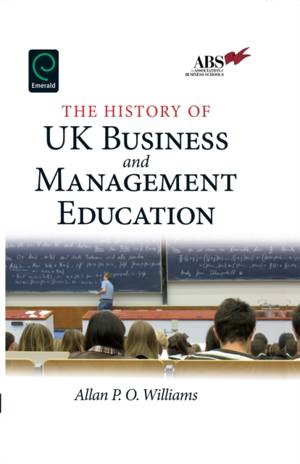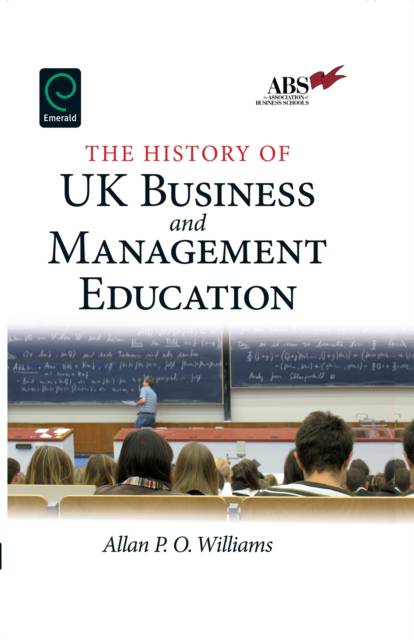
- Retrait gratuit dans votre magasin Club
- 7.000.000 titres dans notre catalogue
- Payer en toute sécurité
- Toujours un magasin près de chez vous
- Retrait gratuit dans votre magasin Club
- 7.000.0000 titres dans notre catalogue
- Payer en toute sécurité
- Toujours un magasin près de chez vous
Description
This is a book that draws together the main influences that have resulted in the impressive emergence of business schools in the UK is badly needed. This book tries to fill this gap by identifying the main institutions and individuals involved. There is minimal overlap with other scholarly works, such as those tracing the development of management thought and critiques of the products of business schools. The American influence on the development of UK business schools is acknowledged, but the emphasis in the book is on UK contributions. Part 1 is an historic overview identifying the milestones in the last two centuries, with particular attention being paid to the twentieth century. The impressive growth of management education in the last fifty years would not have taken place without the creation of supportive institutions. Through their regulatory and informative roles these institutions ensured that growth was accompanied by high standards in teaching and research, thus enabling business schools to make effective contributions to the social and economic needs of society. These supportive institutions for example the Association of Business Schools and the Association of MBAs are discussed in Part 2, as are the professional institutions associated with business and management education for example the Chartered Management Institute and the Chartered Institute of Personnel & Development). Part 3 focuses on the growth of knowledge-based management education, and illustrates how systematic research has contributed to the content and methods of management education. The historical roles of academic and applied bodies such as the Tavistock Institute of Human Relations, the Association of Teachers of Management and the British Academy of Management are discussed. Part 4 focuses on the national and international standing of UK business schools. Trends in the quality ratings of business schools, as revealed by various public assessments and media rankings are explored. A selection of business school histories are examined in an effort to identify factors that have influenced their chosen strategies and subsequent development.
Spécifications
Parties prenantes
- Auteur(s) :
- Editeur:
Contenu
- Nombre de pages :
- 160
- Langue:
- Anglais
Caractéristiques
- EAN:
- 9781849507806
- Date de parution :
- 06-09-10
- Format:
- Livre relié
- Format numérique:
- Ongenaaid / garenloos gebonden
- Dimensions :
- 150 mm x 229 mm
- Poids :
- 358 g

Les avis
Nous publions uniquement les avis qui respectent les conditions requises. Consultez nos conditions pour les avis.






